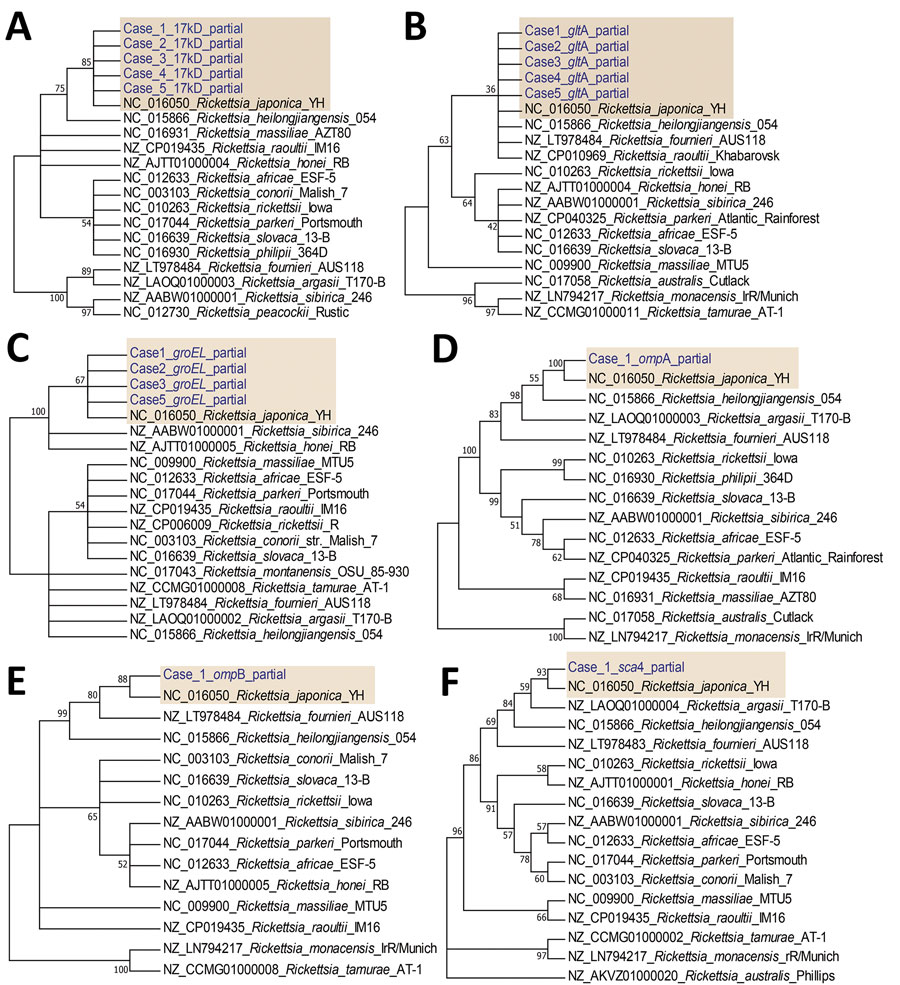Volume 29, Number 1—January 2023
Dispatch
Clinical Forms of Japanese Spotted Fever from Case-Series Study, Zigui County, Hubei Province, China, 2021
Figure

Figure. Bootstrap consensus phylogenetic tree constructed based on partial sequences of 17kDa (A), gltA (B), groEL (C), ompA (D), ompB (E), and sca4 (F) amplified from blood specimens from 5 spotted fever patients in Japan (yellow shading). We aligned sequences using MUSCLE within MEGA6 software (http://www.megasoftware.net). We analyzed phylogenetic relationships using the neighbor-joining method with 1,000 bootstrap replicates; boot values are shown next to the branches. Genbank accession numbers for the Rickettsia strains retrieved are indicated.
1These authors contributed equally to this article.
Page created: November 04, 2022
Page updated: December 22, 2022
Page reviewed: December 22, 2022
The conclusions, findings, and opinions expressed by authors contributing to this journal do not necessarily reflect the official position of the U.S. Department of Health and Human Services, the Public Health Service, the Centers for Disease Control and Prevention, or the authors' affiliated institutions. Use of trade names is for identification only and does not imply endorsement by any of the groups named above.